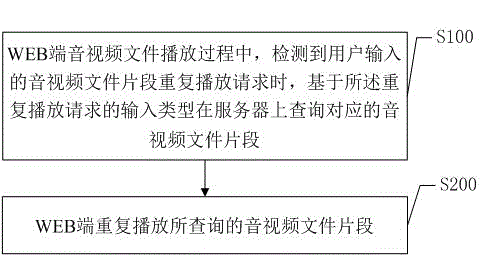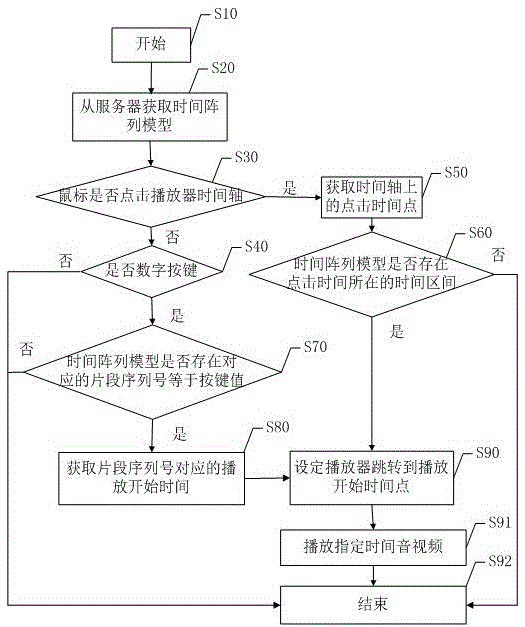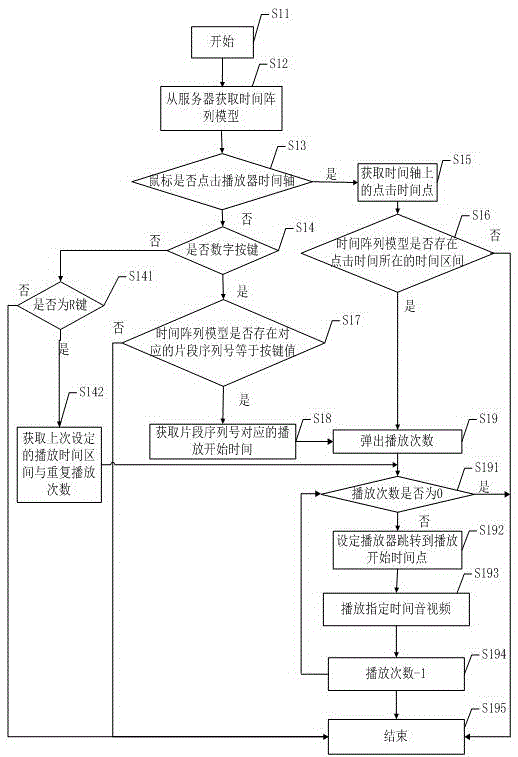Audio and radio file fragment type repeat play method and system at WEB end
A technology of file fragments and playback methods, applied in electrical components, image communication, selective content distribution, etc.
- Summary
- Abstract
- Description
- Claims
- Application Information
AI Technical Summary
Problems solved by technology
Method used
Image
Examples
Embodiment Construction
[0042] In order to make the objectives, technical solutions and effects of the present invention clearer and clearer, the present invention will be described in further detail below. It should be understood that the specific embodiments described herein are only used to explain the present invention, but not to limit the present invention.
[0043] The present invention provides a flowchart of a preferred embodiment of a method for repeating playback of audio and video files on a WEB terminal, such as figure 1 shown, methods include:
[0044] Step S100: During the playback of the audio and video files on the WEB side, when a request for repeated playback of audio and video file segments input by the user is detected, the corresponding audio and video file segments are queried on the server based on the input type of the repeated playback request.
[0045] In specific implementation, during the playback of audio and video files on the WEB side, an event input by the user is de...
PUM
 Login to View More
Login to View More Abstract
Description
Claims
Application Information
 Login to View More
Login to View More - R&D
- Intellectual Property
- Life Sciences
- Materials
- Tech Scout
- Unparalleled Data Quality
- Higher Quality Content
- 60% Fewer Hallucinations
Browse by: Latest US Patents, China's latest patents, Technical Efficacy Thesaurus, Application Domain, Technology Topic, Popular Technical Reports.
© 2025 PatSnap. All rights reserved.Legal|Privacy policy|Modern Slavery Act Transparency Statement|Sitemap|About US| Contact US: help@patsnap.com



